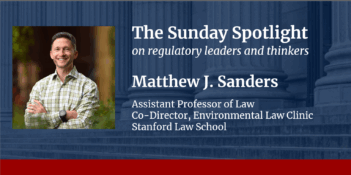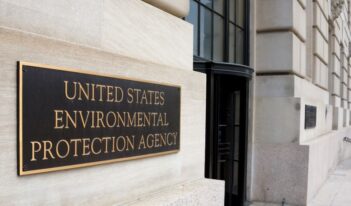
Environmentalists should question any move by this Administration’s EPA to reform its cost-benefit analysis.
In June, former Administrator of the U.S. Environmental Protection Agency (EPA) Scott Pruitt issued an advance notice of proposed rulemaking calling for comments on a potential action with the purported goal of “increasing consistency and transparency in considering costs and benefits in the rulemaking process.” Although many proposals never blossom into final agency action, there is no indication that the agency plans to reverse course.
Consistency and transparency are, in my view, generally good things. So is rational consideration of costs and benefits. Environmentalists, however, have every right to be deeply skeptical of any proposal made by this Administration. Since taking office, the Trump Administration has shown extreme hostility toward the rules and institutions that protect the environment, while going to extreme, and arguably absurd, lengths to prop up polluters that cannot compete in the marketplace on fair terms. The combination has left anyone concerned with environmental protection justifiably horrified.
On its face, the proposal is fairly anodyne and unobjectionable. But given this Administration’s terrible track record during its short time in power, it has a long road ahead if it wants to build the widespread trust necessary to lend even a semblance of legitimacy to reforming how EPA considers the costs and benefits of environmental protection. This Administration has given no indication that it is inclined to engage in a meaningful and productive fashion with constituencies outside of its core base, and holding out hope that this action will be an exception seems foolish.
In principle, there is no reason for environmentalists to fear cost-benefit analysis. When regulators properly consider the costs and benefits of environmental protection, it often turns out that adequate protection warrants stringent regulation of pollution. In fact, cost-benefit analysis can even lead to more stringent standards than other approaches that fail to look at costs. The Clean Air Act’s National Ambient Air Quality Standards (NAAQS) may be the most important example of cost-blind standards. In its 2001 decision Whitman v. American Trucking Associations, the U.S. Supreme Court held that EPA could not consider costs when setting permissible levels of air pollution. But even though the agency cannot consider costs, EPA still conducts a cost-benefit analysis of the proposed standards for purposes of public information. In an analysis of the recent rulemakings under the NAAQS, my co-author Richard L. Revesz and I find that if the agency had used its cost-benefit analyses to set the standards, rather than its cost-blind approach, it would have regulated more, not less stringently.
But even if environmentalists might not want to oppose cost-benefit analysis, they have every reason to be skeptical of any move made by this Administration. The Administration can, in myriad ways, manipulate a purported cost-benefit analysis in favor of pre-selected results. This Administration has shown a deep enthusiasm for these kinds of manipulations. As just one example, in its proposal to roll back the Obama Administration’s Clean Water Rule, EPA under Pruitt ignored studies of the benefits of clean water as outdated because they were a couple of decades old but then relied on studies of regulatory costs from the same time period.
With the departure of Pruitt, the Trump Administration could take a new course, rebuilding tattered relationships and attempting to establish legitimacy for its actions. A template for this kind of move exists. When President Ronald Reagan first entered office, he placed Anne Gorsuch at the head of EPA. Gorsuch and Pruitt played similar roles: Both had relatively low-profile positions prior to their appointment, both had a virulent anti-regulatory agenda, both were deeply unpopular, and both resigned within a short time under a cloud of scandal. President Reagan had the political instinct to recognize that Gorsuch’s nomination had been a disaster—there are few electoral benefits to being perceived as gratuitously hostile to the environment. For her replacement, President Reagan selected William Ruckelshaus, EPA Administrator under President Richard Nixon, who was broadly respected by environmentalists and industry alike. Ruckelshaus immediately reversed course, reestablishing EPA as a strong voice for the environment and even pursuing important protective steps such as the phase out of lead in gasoline.
Were this Administration to make a similar about-face on environmental issues and engage with the diverse set of stakeholders that would be affected by reforms to cost-benefit analysis practices, an effort like that contemplated in the recent advance notice might be appropriate and even beneficial. As in many areas of public policy, the agency can improve in how it counts costs and benefits. For example, methodologies could be clarified and harmonized, areas of uncertainty could be identified and investigated, and best practices could be surveyed and adopted.
But, for the time being at least, the likelihood of a reasoned, balanced, and legitimate approach to reforming cost-benefit analysis at the agency seems so remote as to be almost unimaginable. If this Administration is genuinely interested in making lasting and rational reforms, it must first engage in the hard work of building relationships and trust with a broad constituency, a path that it has not even begun to tread.
This essay is part of a series, entitled Consistency and Transparency in Environmental Cost-Benefit Analysis.




